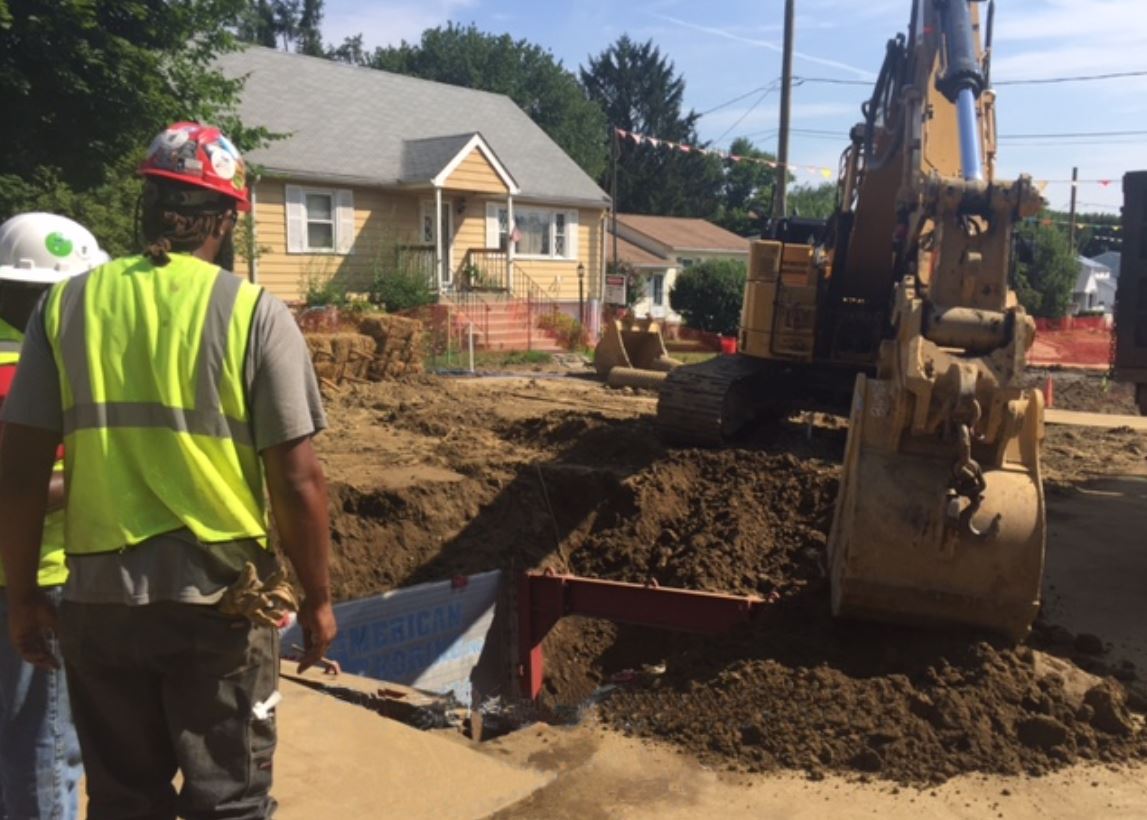Atlantic Bridge builds crucial connections with communities and customers
September 26, 2019
Careful work is carried out on the Atlantic Bridge project in the U.S. Northeast in 2019.
Compared to other pipeline projects, the length of new pipe involved in Enbridge’s Atlantic Bridge Project isn’t significant. But when you look at the urban density of the area and the scope of the project, the challenges become clear.
“We are working so close to homes and businesses, as well as an operating pipeline in the same right-of-way,” notes Paul Grosskopf, director of Enbridge’s major projects group. “This requires a level of precise planning and coordination that just isn’t common on other projects.”
Atlantic Bridge is replacing a 6.3-mile (10-kilometer) section of pipeline from 26-inch-diameter pipe to 42-inch pipe in the existing footprint in New York and Connecticut. The project also involves a new meter station in Connecticut, modifications to various stations spread across several states, installations of four new compressor units at existing facilities, and a new compressor station in the community of Weymouth, just outside of Boston, Massachusetts.
When completed, Atlantic Bridge will provide an additional 132,700 dekatherms of capacity on the Algonquin Gas Transmission and Maritimes & Northeast pipelines systems. It will bring additional capacity to serve the important gas markets in New England as well as New Brunswick and Nova Scotia.
Working with communities
As expected with this project, much time has been devoted to building long-term relationships with stakeholders and ensuring an open dialogue with the communities.
Project manager John Heintz recalls one delicate aspect of the project where the pipeline trench abutted front doorsteps of neighbors.
“We had to work with the homeowners on this street to manage their daily lives, including getting to school or work or running errands,” explains John. “You might expect that these people would be pretty upset, but in fact they’ve been very supportive and have written letters expressing their appreciation for how we managed the situation.”
In addition to handling some very complex landowner issues, there’s been plenty of coordination between numerous groups at Enbridge to manage outages.
“We’ve had to take the line out of service for long periods of time to complete the work. Good communication with everyone involved in the project has been essential to the way we’ve worked together,” explains Jim Luskay, Enbridge’s manager of major projects in the U.S.
Complex permitting process
In execution since July 2015, Atlantic Bridge was originally targeted for in-service in November 2017. Because the project spans multiple states, the permitting process is quite complex. This requires a significant amount of change management to work through the requirements and requests of the various regulatory authorities.
“The regulatory environment in New York specifically and New England in general has been particularly challenging,” says Grosskopf. “While timelines for permits have been less than predictable, the project team continued to focus on ensuring we follow through on our commitments with the agencies.”









